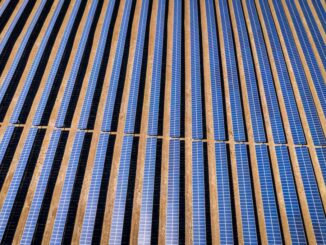
Illinois consumer and environmental groups are arguing in filings before the state commerce commission that there is racial disparity and “environmental racism” in Peoples Gas’ record of disconnection and reconnection in Chicago, as the utility seeks approval for a record $402 million rate increase.
In the rate case for Peoples Gas (23-0069), they are urging the commission to pursue “restorative justice” to address these disparities. And they are arguing that building electrification could substantially reduce the energy burden on low-income households.
Peoples Gas has proposed increasing rates significantly to pay for replacing aging pipelines; it says most of the pipes in its system need replacement by 2030. Public interest groups are saying the utility should instead invest in improving customers’ energy efficiency and other “non-pipe alternatives” to meet demand.
They are asking the Illinois Commerce Commission to launch a “future of gas” proceeding, similar to processes undertaken by Massachusetts and New York in recent years. That process would explore options for shifting more households to electricity for heating, cooking and hot water.
“You have a situation where the system from a sociopolitical view is functionally insolvent — a third of the city already can’t afford to pay their monthly bills,” said Dave Kolata, former executive director of the Citizens Utility Board and now vice president of policy for the climate technology firm Sealed.
Get connected
Every morning, thousands of energy professionals turn to our newsletters for the day’s most important news. Sign up for free to get the latest delivered straight to your inbox.
“That’s a situation that’s only going to get worse. We needed to start yesterday with an equitable transition to a better, cheaper, cleaner form of heat. We can’t keep ducking the issue, because if we do, people with money will realize they can get better, cleaner, cheaper heat by switching to electric heat pumps, and the people left behind are ones struggling to pay their bills.”
From April to November 2022, Peoples Gas disconnected households in primarily Black, Indigenous and communities of color at about three times the rate of households in predominantly White communities with similar incomes, University of Michigan energy justice lecturer Justin Schott testified before the commission.
In BIPOC communities, a disconnection notice was much more likely to result in an actual disconnection, and customers were also 20% less likely to be reconnected, Schott testified.
The public interest groups complain that Peoples Gas is not been transparent about the factors it considers in deciding when to issue late fees and shut off service for non-payment, using a “black box algorithm … where customers who’ve done nothing wrong are deemed riskier, disproportionately people living in Black and Brown communities,” said Christie Hicks, an attorney for the Environmental Defense Fund, one of the organizations represented in the filings.
In Illinois, more than a third of Black and Latino households forewent other needs to pay for energy, according to the U.S. Census surveys cited by Schott. He testified that Peoples Gas failed to classify more than 80% of its customers who meet federal criteria for low-income as eligible for low-income rate relief programs, including legal protections against late fees.
He recommended to the commission that no one be disconnected for owing more than 6% of their income on energy, a maximum energy burden standard promoted by the American Council for an Energy-Efficient Economy and other experts. Advocates recommend that for customers with gas and electric service, each represents no more than 3% of their income.
“Achieving this robust level of distributive and restorative equity will require exploring all options to reduce customer bills, maximize assistance, leverage new sources to enhance energy efficiency and beneficial electrification, restructuring regressive customer charges, and ensuring that all customer classes pay their fair share to ensure universal access to affordable energy,” Schott told the commission.
Chicago’s Energy Transformation Code, adopted last fall, requires all new buildings to be wired for electric stoves and water heaters. A proposed ordinance would set emissions standards for new buildings that would basically require reliance on electricity rather than gas for heating and cooking.
These measures don’t affect existing buildings. But the Inflation Reduction Act offers incentives for electrifying existing buildings, with rebates of up to $8,000 available for low-income customers to buy electric heat pumps. The IRA offers $4,000 rebates for moderate-income families and $2,000 tax credits for higher-income families to get heat pumps.
Widespread electrification will only reduce energy burden and carbon emissions if the electricity is affordable and clean, advocates note.
Illinois law mandates phasing out almost all fossil fuel generation by 2045. North Shore Gas and electric utilities ComEd and Ameren have their own rate cases ongoing along with Peoples Gas, including mandates for affordability and energy efficiency.
“The rate cases for the gas and electric utilities are all happening at the same time, which presents a really unique opportunity for holistic energy transition planning including external factors — the buildings ordinance, new incentives available through the Inflation Reduction Act,” Hicks said.
“If a household is going to be replacing their gas furnace, electrification is going to be a better deal for them than continuing to stay on the gas system because of the extraordinarily high rates Peoples Gas is charging today, and the increase they’re asking to charge. It’s a burden too high to bear for families, and the environmental impacts are also falling disproportionately” on those same families.
Improving energy efficiency is also crucial, advocates note.
“Electrification will not be affordable if it is not paired with holistic energy retrofits that can bring down overall electricity usage and costs, especially since communities of color and low-income communities often have disproportionately older, more inefficient housing that will need support and repair,” said Madeline Semanisin, Midwest building decarbonization advocate for the Natural Resources Defense Council, one of the organizations involved in the case before the commission.
Over 20 years, a low-income single-family household would save almost $20,000 by switching completely from gas to electricity, energy consultant Chris Neme testified on behalf of the public interest groups.
Heating accounts for by far the largest portion of a gas bill, so even electrifying heating while using gas for cooking and hot water would mean major savings and allow Chicago-area customers to access ComEd’s low rates for electric heating, Neme testified.
In filings before the commission, Peoples Gas said it distributed almost a million dollars in 2022 and has $6.7 million available to assist low-income customers through the Share the Warmth program, which provides grants up to $200. It also cited the federal LIHEAP program that helps customers with bills, and said it plans to spend $13 million on energy efficiency assistance in 2023.
In filings, Peoples Gas argued against electrification as a response to gas rate concerns.
“Forcing electrification on PGL customers on an aggressive timetable would be massively expensive,” said Peoples Gas testimony.
“This would be in addition to the increase in electric rates that would result from the cost adding new generation and building a new electric transmission and delivery system capable of meeting dramatically higher demand. Proposals to electrify and decarbonize Chicago should safeguard energy affordability for all residential and commercial customers.”
Peoples Gas posited that the Chicago-area grid is not ready for a big influx of electricity demand, and cited an American Gas Association study that found gas heating and cooking results in lower carbon emissions than electricity.
“These challenges and resulting uncertainty around the pace of electrification in Chicago, coupled with the encouraging promise of renewable natural gas and hydrogen and the ultra-high efficiency of natural gas used in home heating appliances, make Peoples Gas’s energy delivery network a key component of Chicago’s clean energy future,” the utility said in its filing.
In contrast to the gas industry study, nationwide municipalities and organizations including the U.S. Green Buildings Council have cited various studies in pushing building electrification as a way to reduce carbon emissions and meet climate goals. In Illinois, Neme testified before the commission that “electrification will reduce greenhouse gas emissions by 35% or more in the first year, and by 50% or more as the Illinois electric grid becomes increasingly clean over the 20-year time horizon of our analysis.”
Natural Resources Defense Council clean energy advocate J.C. Kibbey and others said that gas affordability can’t be addressed separately from the electrification debate.
“Gas utilities and other opponents of electrification will argue there are other ways to reduce the racial disparity in shutoffs while continuing to burn methane gas in homes,” Kibbey said. “If we reallocate the growing costs of the gas system further up the income ladder, they will claim we can solve the affordability problem.”
But if higher-income people are asked to pay more for gas, they are even more likely to decide to switch to electricity, Kibbey said, creating a vicious cycle wherein the situation gets even worse for lower-income people.
“This would leave the people who lack the means to leave [the gas system] to bear an ever-increasing share of the costs of the gas system, likely worsening the shutoff problem,” Kibbey explained. “The only way to avoid these bad outcomes is a planned transition away from gas and proactively supporting and prioritizing people of color and people with low incomes in electrifying their homes.”
The Natural Resources Defense Council offered a list of recommendations that Chicago can take to help lower-income households electrify, including “commitments to fully electrify a certain number of low-income homes and buildings each year,” and “a timeline to retrofit and electrify all city-owned buildings, including public housing.”
Kolata said some advocates would like to see the city of Chicago create a nonprofit entity to help people access direct pay tax credits available under the IRA to subsidize electric heat pumps and other infrastructure for building electrification.
“People used to say gas may be bad for the environment but it is affordable,” Kolata said. “That hasn’t been true for a very long time, especially not in Chicago where the gas system is driving large parts of the city into energy bankruptcy. It’s only going to get worse, so we need to deal with it.”



